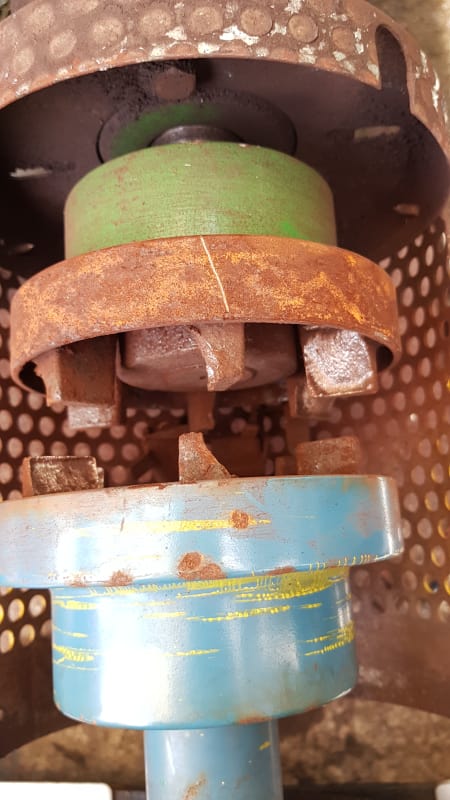Sofistioelevib
Industrial
- Jun 24, 2015
- 100
Good morning Guys,
yesterday on my vibration inspection i found a problem on a flexible coupling as in a picture.
The configuration is motor and pump simply without gearboxes or belt, the speed is 1480 RPM
Simple to see 6 join on a coupling but i found a strong spectra with only 5 times per revolution (8 mm/sec) especially on axial plane.
To ensure to 5 times exactly i performed a 200 Hz fmax with 6400 spectral lines
I thought to find 6X instead of 5X, have you any idea why?
No information on time domain
The spare unit is running and we are going to change coupling soon
Regards

yesterday on my vibration inspection i found a problem on a flexible coupling as in a picture.
The configuration is motor and pump simply without gearboxes or belt, the speed is 1480 RPM
Simple to see 6 join on a coupling but i found a strong spectra with only 5 times per revolution (8 mm/sec) especially on axial plane.
To ensure to 5 times exactly i performed a 200 Hz fmax with 6400 spectral lines
I thought to find 6X instead of 5X, have you any idea why?
No information on time domain
The spare unit is running and we are going to change coupling soon
Regards

